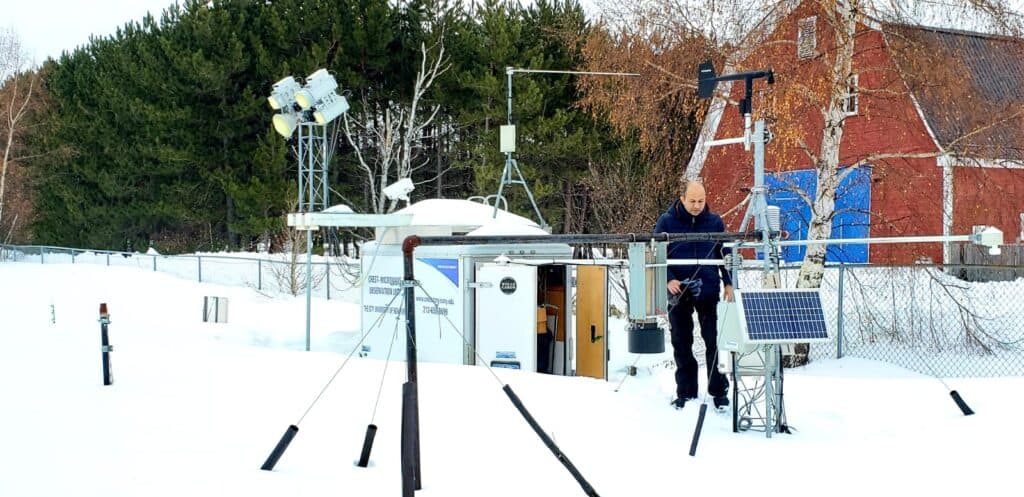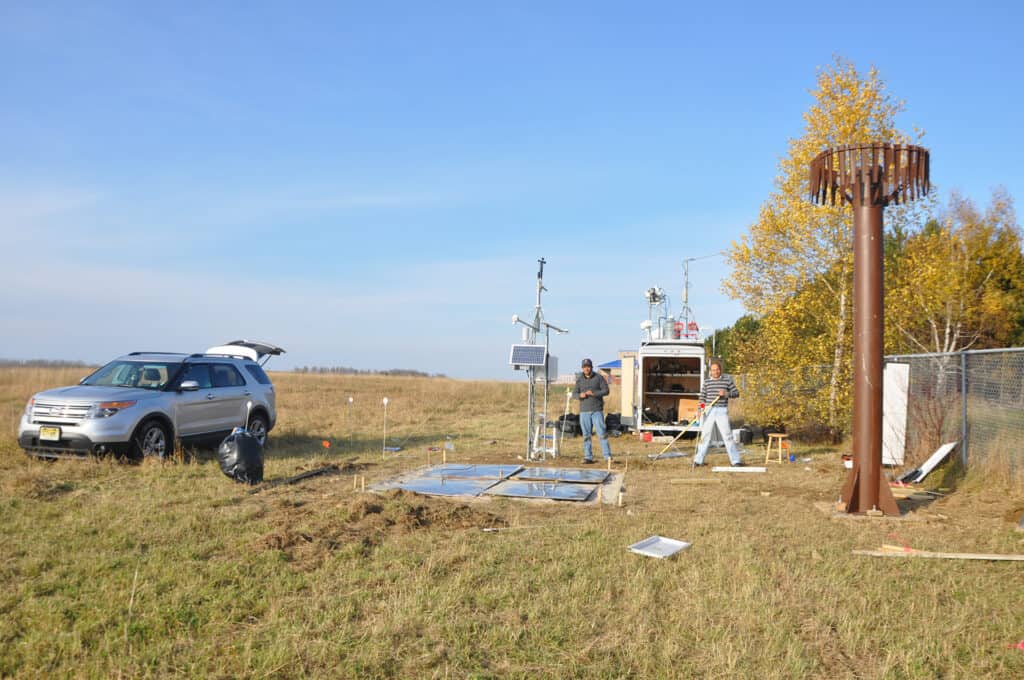Dr. Tarendra Lakhankar is the Principal Investigator of CREST-Snow Analysis and Field Experiment (CREST-SAFE), which has been conducted every winter season since 2010. The experiment is located at Caribou Municipal Airport and National Weather Service office in Caribou, Maine, an ideal location for snow studies due to its humid continental climate and high snowfall levels. The CREST-SAFE data is available online and can be accessed through https://www.noaacrest.org/snow/data.html.
The snow field experiment collects ground-truth data on snow properties such as snow depth, wetness, and temperature, which can be used to validate and refine remote sensing data from satellites and aircraft. By combining ground-based measurements with remote sensing data, researchers can develop more sophisticated and robust algorithms for estimating snow properties such as snow depth, wetness, and snow water equivalent, which are critical for predicting snowmelt runoff and managing water resources.
The goal of snow field experiments is to develop comprehensive models of snowmelt processes, which can be used to inform water resources management and conservation. These models can predict the timing and amount of snowmelt runoff, which is critical for water supply, flood control, and ecosystem protection in mountainous watersheds.
The snow field experiment uses a microwave radiometer and snow depth and snow wetness sensors to study the relationship between microwave radiation emitted by the snow and the physical properties of the snow, such as its depth and wetness. The experiment gathers data on how the microwave radiation interacts with the snow and how this interaction can be used to infer properties of the snow.
The snow field experiment aims to develop a better understanding of how microwave radiation interacts with snow, including how the radiation is absorbed and scattered by the snow. The experiment also develops methods to accurately measure snow depth and wetness using microwave radiometry and investigates the effect of snow wetness on microwave emission, as wet snow may have different microwave properties than dry snow. Additionally, the experiment explores the potential of microwave radiometry for remote sensing of snow properties, such as snow depth and wetness, in regions where ground-based measurements are not feasible.
The CREST-SAFE snow field experiment is a valuable research project that contributes to our understanding of snow processes and helps inform water resources management and conservation. The project provides critical ground-truth data that can be used to validate and improve remote sensing data and develop sophisticated models of snowmelt runoff. Dr. Lakhankar’s leadership and expertise in this field are critical to the success of the project, and his contributions are significant to the scientific community.





